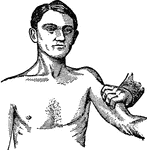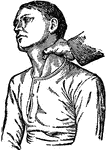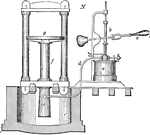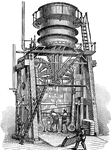Clipart tagged: ‘compression’

Branchial compression
"In bleeding from any part of the arm or hand the branchial artery should be pressed outwards against…

Carotid compression
"The carotid artery may be compressed by pressing the thumb or fingers deeply into the neck in front…

Compression Experiment
"If the strong tube, or barrel, be smooth, and equal on the inside, and there be fitted to it the solid…

Hydraulic Press
A hydraulic press is a hydraulic mechanism for applying a large lifting or compressive force. It is…

Hydraulic Press
A hydraulic press is a hydraulic mechanism for applying a large lifting or compressive force. It is…

Compression Pump
A machine used to keep blood and lymph flowing by pushing air through bands or sleeves that are placed…

Behavior of Fibers in Tension Test
"Since the strength of the fibers in adhesion is very much less than in tension and compression, adhesion…
